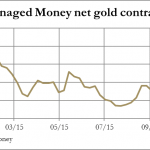Is there a better way to weight stocks within a market index?
Modern portfolio theory suggests that the optimal way to weight stocks within an index is according to their market capitalization, where the percentage representation of each company within a particular index is based on the product of its share prices and number of shares outstanding with respect to the total sum of all the market capitalizations of the companies whose stocks make up the index. Examples of market cap-weighted indices includes the S&P 500 and the Nasdaq 100 (Ticker: QQQ).
There are, of course, other ways to weight the holdings of the stocks of individual companies within a market index. For example, the Dow Jones Industrial Average (Ticker: DJI) is a price-weighted index. There are also equal weighted indices, in which the number of shares of each component stock within the index is periodically adjusted so that each represents the same market capitalization.
A little over 10 years ago however, Rob Arnott of Research Affiliates introduced a new method for setting the weight of each stock within a market index, called fundamental indexing. Here, instead of using either market cap or price, stocks within the index would be weighted according to fundamental measures of their companies’ business performance, such as their revenue, dividend rates, or book values.
Here is the promise of fundamental indexing that Arnott noted back in 2006, based on his analysis of the 1,000 stocks that made up his proposed index:
How consistent is this approach? It’s awfully consistent. During economic expansions, you add almost two percent a year. During recessions — when you most need those returns — you add three and a half percent. During bull markets you add 40 basis points. You don’t really add anything in bull markets, because they are driven more by psychology than by the underlying fundamental realities of the companies. And so during bull markets you keep pace. Which is good; it’s important. During bear markets you find yourself adding 600 to 700 basis points per annum. Bear markets are when reality sets in and people say, “Show me the numbers.” Bear markets are when this really comes on strong. Also, during periods of rising rates, two and a half percent added. During periods of falling rates, one and a half percent added.














Leave A Comment